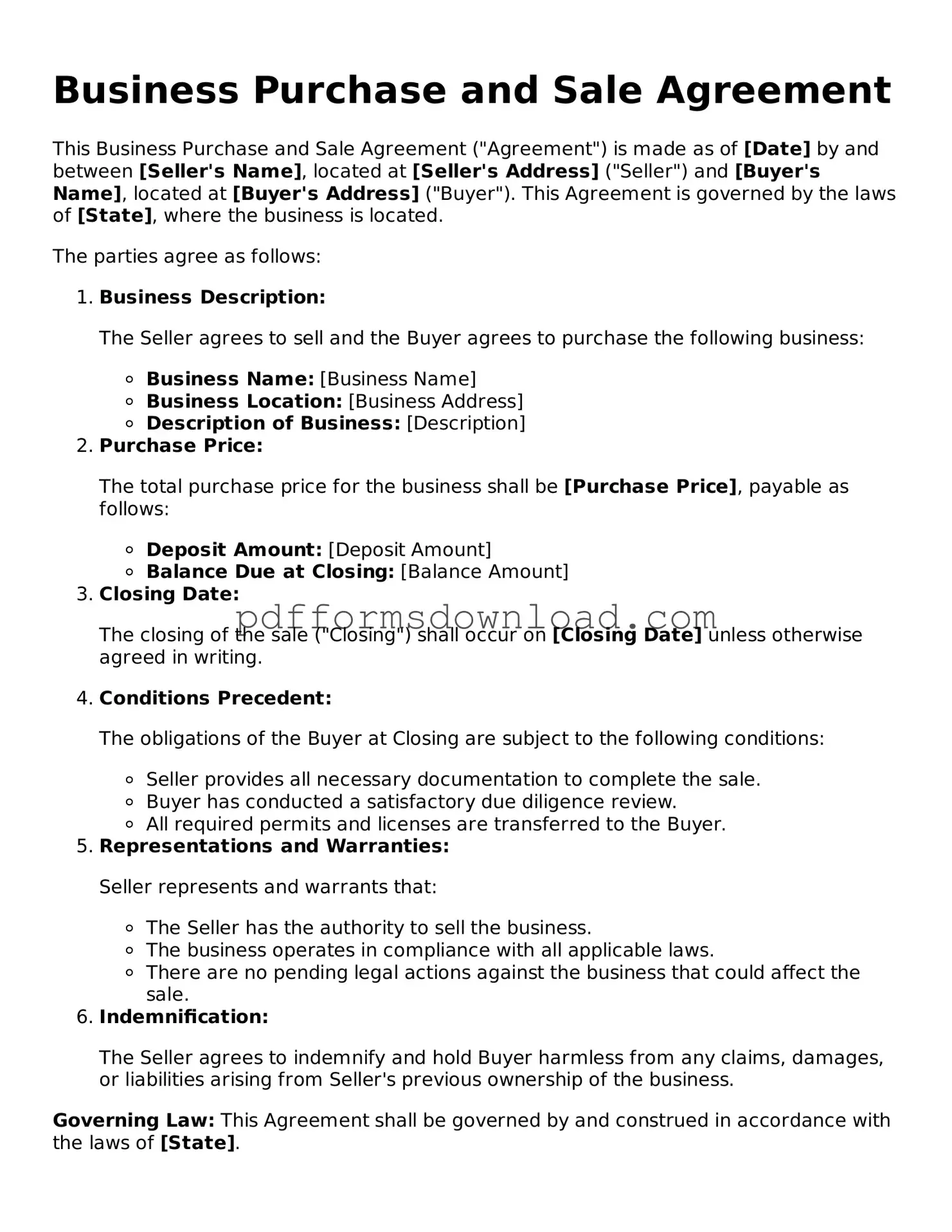What is a Business Purchase and Sale Agreement?
A Business Purchase and Sale Agreement is a legal document that outlines the terms and conditions under which a business is bought or sold. This agreement typically includes details about the purchase price, payment terms, and any contingencies that must be met before the sale is finalized.
Why is a Business Purchase and Sale Agreement important?
This agreement is crucial because it protects both the buyer and the seller. It clearly defines the rights and responsibilities of each party, helping to prevent misunderstandings or disputes. Having a formal agreement also provides a record of the transaction that can be referenced in the future.
What should be included in a Business Purchase and Sale Agreement?
Key components of this agreement generally include the names of the buyer and seller, a description of the business being sold, the purchase price, payment terms, and any warranties or representations made by either party. Additionally, it may outline any conditions that must be fulfilled before the sale can be completed.
Can a Business Purchase and Sale Agreement be modified?
Yes, a Business Purchase and Sale Agreement can be modified, but any changes must be documented in writing and signed by both parties. Verbal agreements or informal modifications may not be enforceable, so it is best to keep all changes formal and documented.
What happens if either party breaches the agreement?
If either party fails to adhere to the terms of the agreement, it may be considered a breach. The non-breaching party may have the right to seek damages, which could include financial compensation or specific performance, where the breaching party is required to fulfill their obligations as outlined in the agreement.
Is it necessary to have a lawyer review the agreement?
While it is not legally required to have a lawyer review the agreement, it is highly recommended. A legal professional can help ensure that the document is comprehensive and complies with applicable laws, reducing the risk of future disputes.
How long does the process of buying or selling a business typically take?
The timeline for completing a business sale can vary widely. Factors such as the complexity of the business, the negotiation process, and the due diligence required can all affect the duration. Generally, it can take anywhere from a few weeks to several months to finalize the sale.
What is due diligence in the context of a business sale?
Due diligence refers to the process where the buyer investigates the business to verify its financial and operational status. This may include reviewing financial statements, contracts, and legal documents. Conducting due diligence helps the buyer make an informed decision and assess any potential risks associated with the purchase.
Are there any tax implications when buying or selling a business?
Yes, both buyers and sellers may face tax implications. The seller may need to pay capital gains tax on the profit from the sale, while the buyer may be able to deduct certain expenses related to the purchase. Consulting with a tax professional is advisable to understand the specific tax consequences involved.
Can the Business Purchase and Sale Agreement be used for any type of business?
Yes, a Business Purchase and Sale Agreement can be adapted for various types of businesses, whether they are small sole proprietorships or larger corporations. However, specific terms and conditions may vary depending on the nature of the business and the complexities involved in the transaction.
